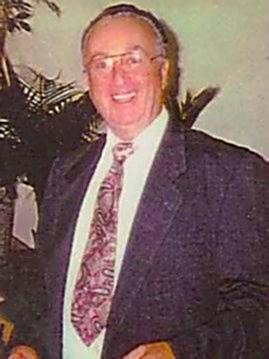
Leroy Frederick Crouch (1936–1999)
Early life and education
The late Bishop Rev Leroy Frederick Crouch was born on February 16, 1936, in Santa Barbara, California, to Frank Leroy Crouch and Helene Marie (Pixner) Crouch. He grew up in Southern California. After a Divine encounter at the age of 16 he felt a calling to ministry (the first of the 16 times he described being taken to heaven at various times of his life). He pursued ministerial training at fundamental Bible schools, particularly at Moody Bible Institute. In 1968, he married Barbara Hamit. His formal education encompassed both theology and music—earning a master’s degree that shaped his worship leadership and contributed to the musical excellence evident throughout his ministry. Over the decades, he continued advanced theological studies, remaining a devoted student of Scripture and doctrine.
Ministerial formation and counseling work
Crouch began ministry with a Pentecostal orientation before serving and speaking across other denominations. By his account and that of his congregation, he remained a strict biblical fundamentalist and tried to work “within each host denomination’s own doctrinal sources,” yet he was periodically asked to depart when his scriptural emphases—particularly on Hebrew roots, feasts, and sacred names—went beyond local comfort. Alongside preaching, he operated men’s homes and a large counseling ministry in Orange County. He was frequently described as an energetic, accessible communicator; he claimed to have helped reconcile more than 3,000 marriages over a counseling career of 30+ years.
Restoration Ministries (Orange, California)
Crouch is best known for Restoration Ministries in Orange, which was as much a church assembly as it was a teaching university. The sanctuary décor reflected his Celtic/Culdean and Hebraic interests—ensigns of the tribes of Israel, Davidic and royal genealogical motifs, and the Declaration of Arbroath. The church hosted conferences with visiting theologians, linguists, and health lecturers. Notable influences and visitors included E. Raymond Capt and advocates of traditional values and public policy (e.g., collaborations with America’s Promise Ministries and the Traditional Values Coalition). The ministry’s teaching program was extensive, preserved in a multi-hundred-item catalog of cassette and CD series.
Teaching emphases and theology
Crouch’s pulpit program stressed:
-
Feasts and Sabbaths – Passover through Tabernacles, new moons, and the seventh-day Sabbath, presented as Christ-fulfilled appointments rich in prophetic meaning.
-
Sacred Names – Use of the divine name and Hebraic terminology, which, while prompting realignment, brought renewed spiritual focus.
-
Overcoming and King–Priest themes – Ezekiel’s living creatures, priestly garments, and the Tabernacle of David.
-
Ezekiel and Revelation – Interpreted through priestly and festival frameworks.
-
Celtic and Culdean continuity – As expressions of the ancient orthodox and apostolic faith.
The congregation’s primary study Bible was the King James text annotated with Spiros Zodhiates’ Hebrew/Greek word studies; a secondary pulpit text was Herb John’s Aramaic (Peshitta-based) translation and exegesis, which the ministry publicized locally, including coverage in the Orange County Register. Crouch also taught on the British-Israel theme—such as the Throne of David in Ireland, Scotland, and England—always framed within an orthodox Christian worldview.
Vision and anointed ministry
He maintained many co-working relationships with orthodox ministries, sharing in anointed offices and joint labors that carried forward the apostolic work and spiritual heritage of the church.
Experiential claims
Crouch publicly claimed visionary experiences, including being “taken to heaven” on multiple occasions (often cited as sixteen), which shaped his lifelong expositions of Ezekiel, Revelation, the “four Chai,” and what he called the “Cherubim of Glory.” These experiences were presented not as novelty but as pastoral instruction toward a mature, victorious Christian life.
Broadcasting and public presence
During the 1960s and later, Crouch’s services and events were periodically noted in regional newspapers, and some teachings appeared on local television. His reputation as a counselor and a provocative but Scripture-anchored preacher drew visitors from many denominational backgrounds. When appropriate, he referred congregants back to their own traditions—Roman Catholic, Eastern Orthodox, or Protestant—for sacramental life and pastoral care.
Death and succession
Crouch died on May 28, 1999, in Huntington Beach (Orange County), at age 63. His funeral, conducted amid Celtic and Hebraic symbolism, included eulogies and prophetic declarations from peers and protégés. Restoration Fellowship (successor ministry) undertook preservation and distribution of his sermon catalog in the 2000s. Ministers associated with the work—including Pastor Lloyd Dagley (d. 2025), Bishop Lesley C. Boyle, and Jeff Smith—affirmed the continuation of the tape ministry and recognized Rev. Dr. Stephen M. K. Brunswick (who grew up in the church) as bearing the mantle to continue the outreach under the Orthodox Church of the Culdees and allied Celtic-Orthodox partnerships, including intercommunion relationships developed during Brunswick’s European mission period.
Selected major series (examples)
-
Feasts of Yahweh (multiple multi-part runs from the 1990s)
-
Life II (long-running spiritual formation series)
-
Archons; Power of Life and Death (spiritual formation and warfare)
-
Tabernacle of David; Cherubim of Glory; Priestly Garments
-
Revelation (multi-year lecture series); Days of Noah; The Manchild
-
Throne of David; Stone of Destiny; Heaven Is Not Up
Legacy
Crouch’s legacy endures through his recorded sermons, the ongoing Restoration Ministries tape catalog, and through ministries that developed from his network. His followers remember him as a pastor who combined scriptural depth with accessibility, a teacher who bridged Hebrew and Celtic Christian traditions, and a man who sought to bring believers into what he called the “fullness of divine life” in Christ.
